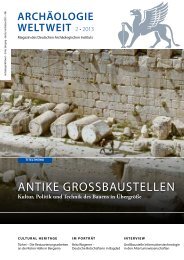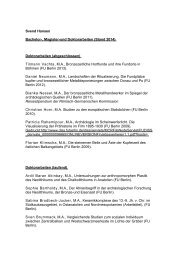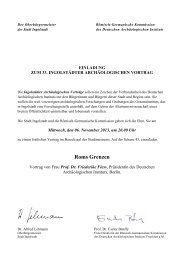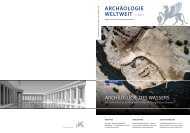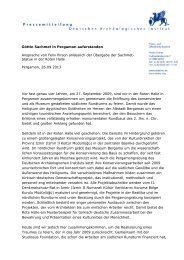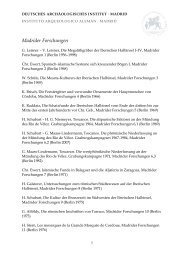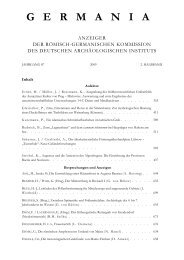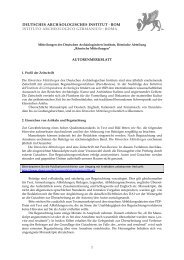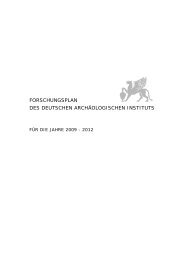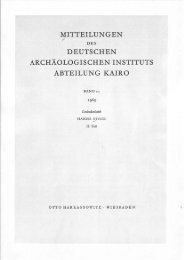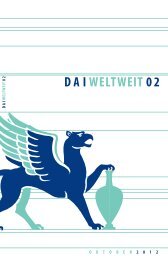Untitled - Deutsches Archäologisches Institut
Untitled - Deutsches Archäologisches Institut
Untitled - Deutsches Archäologisches Institut
You also want an ePaper? Increase the reach of your titles
YUMPU automatically turns print PDFs into web optimized ePapers that Google loves.
Excavations in the area of the east harbour of Miletus<br />
Geomagnetic mapping on the east flank of the north district of Miletus – the hill known as<br />
Humeitepe (Fig. above) – has revealed that one of the city’s so far unknown harbours must<br />
have been located here. Preliminary excavations of the Ruhr-Universität Bochum financed by<br />
the Mercator Foundation were launched in 2011. In the course of the first surface survey a<br />
rather long section of the defensive wall (the so-called Goths’ Wall), which has been erected<br />
in the 3 rd century AD, was discovered in the north-east of the area. It still has a height of<br />
up to 3.50 m. Its existence confirms Philipp Niewöhner’s assumption that the defensive wall<br />
also encircled the Humeitepe, and that the latter must have been much more important than<br />
supposed so far.<br />
The excavations additionally verified the older city wall, 3.80 m thick, and one of the entrances<br />
to the harbour, which in Roman times was furnished with a marble gateway (Fig. below<br />
right). Among the finds from the gate area a late Hellenistic caryatid (2 m high) is notable (Fig.<br />
below left). This sculpture is probably a personification of the city; it may have been one of a<br />
pair re-used in the decoration of the gateway. Furthermore to note is a Hadrianic inscription<br />
attesting that an association of Milesian ship owners possessed a building in the vicinity of<br />
the east harbour. Other architectural structures that have been excavated to the north-west<br />
of the gateway may be the remains of a stoa. The complex could have covered a large area<br />
like the North Market at the Lion Gate according to the geomagnetically detected structures.<br />
Further excavation in the area of the gate was not possible due to the high groundwater level<br />
as a result of flood irrigation.<br />
Helga Bumke, Aylin Tanrıöver<br />
13



